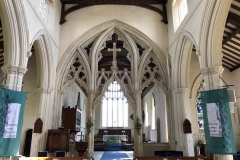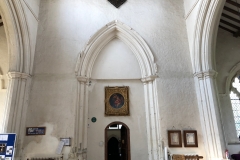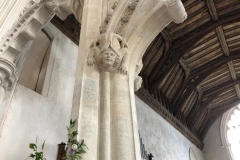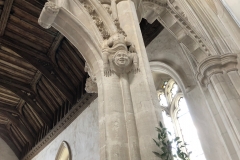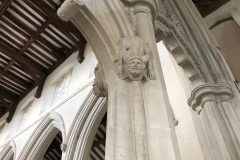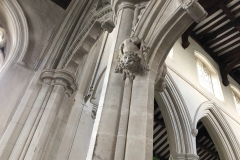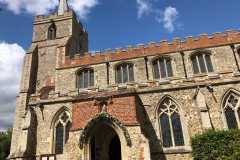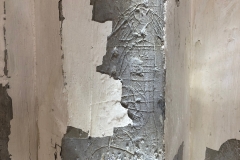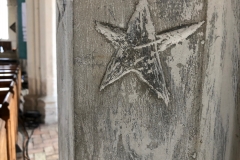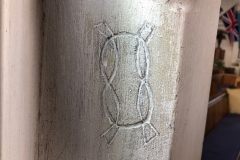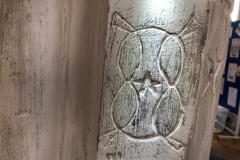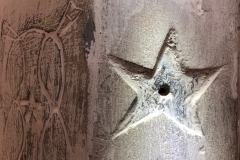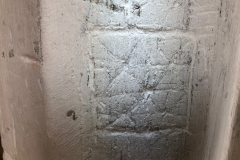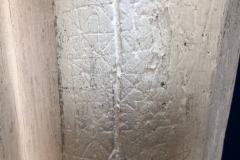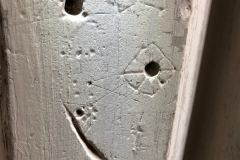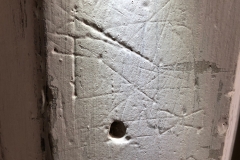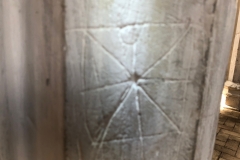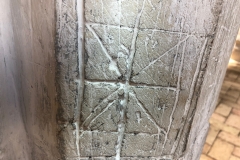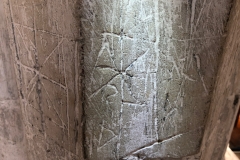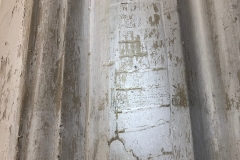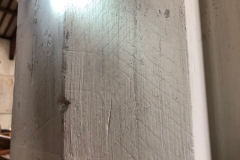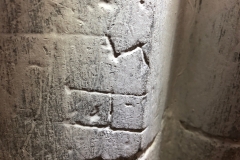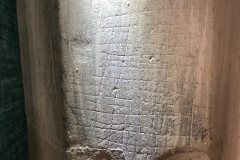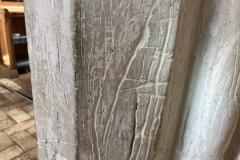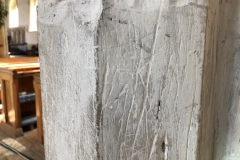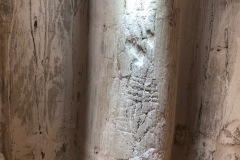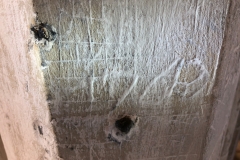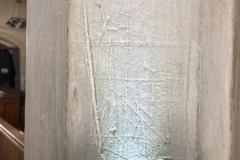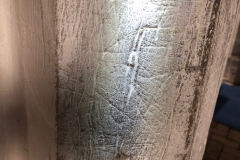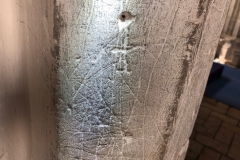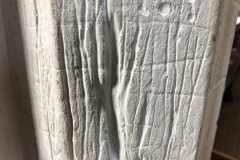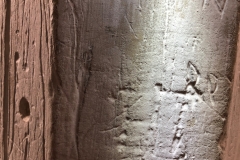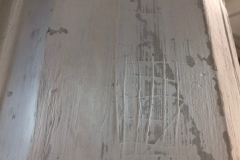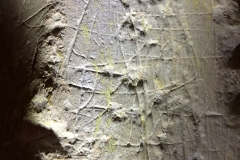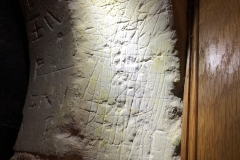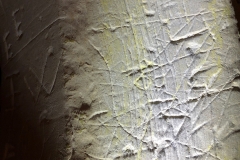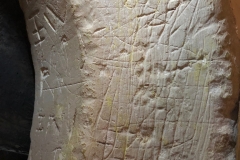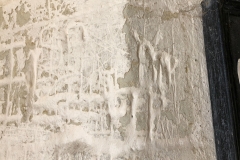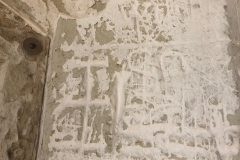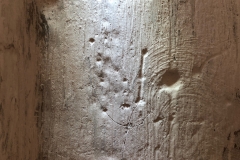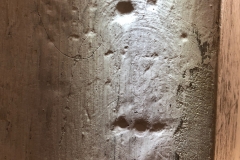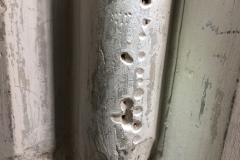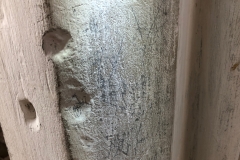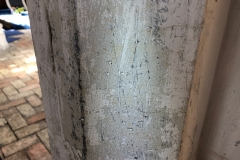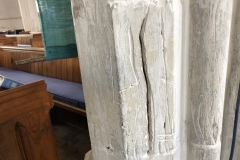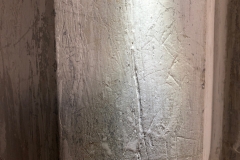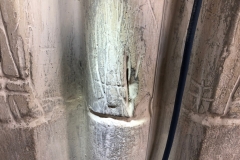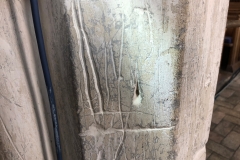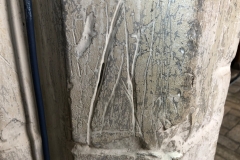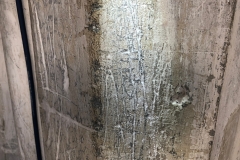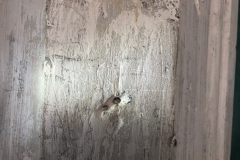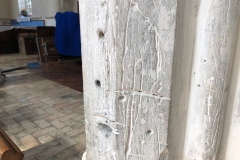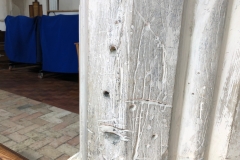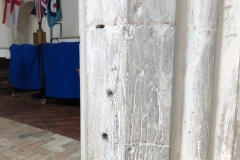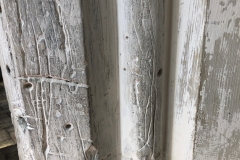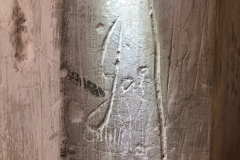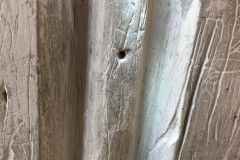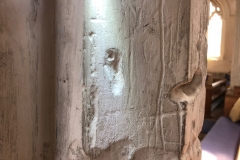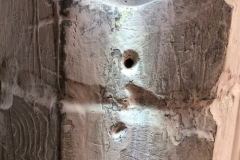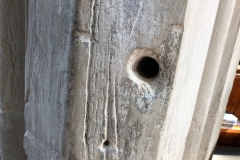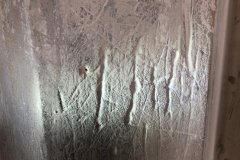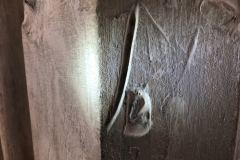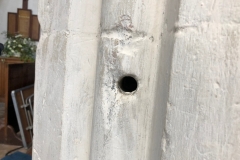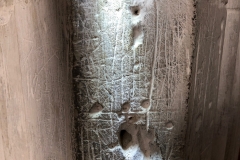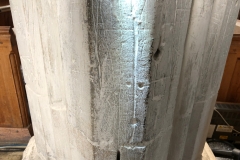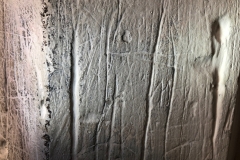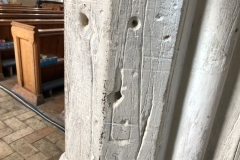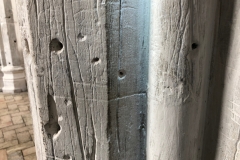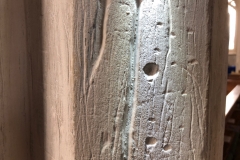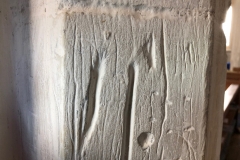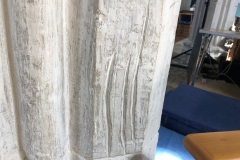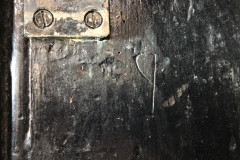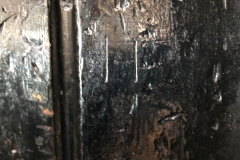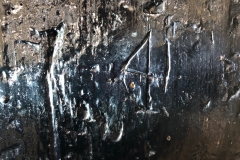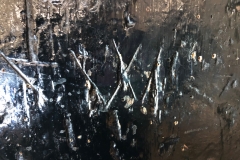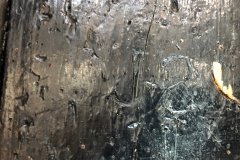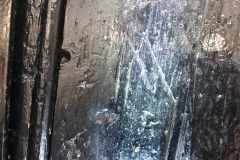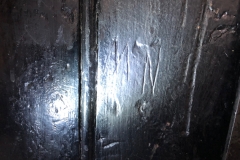St Mary’s Stebbing Essex (1/2)
The light and airy church of St Mary the Virgin in the little village of Stebbing in the Uttesford district of Essex is one of those that appears to be way bigger than the size of population it serves. It stands on a ridge of high ground towards the south end of the village and is visible as you approach. While the church is famous for its stone rood screen, it is clear that the parishioners have been inscribing graffiti on its stonework almost since it was built in the 1360s. The graffiti ranges from names and initials, protective marks and some exceptional heraldic specimens to some marks that defy easy explanation.
One of the most distinctive pieces of graffiti is the figure of a woman on the south side of the tower arch. She appears out of the flaking whitewash wild-haired and looking unhappy with her lot. I try to avoid imaginative speculation when collecting and reporting graffiti, but this was a time when I felt I was at the start of a Doctor Who episode.
There are several deeply carved heraldic badges on the columns of the south arcade. The De Vere mullet for the Earls of Oxford and the Bourchier knot for the Earls of Essex are clearly visible. Despite being Earls of Oxford the De Vere family had a home at Castle Hedingham in Essex and it is not unusual to find their device as graffiti in the north west of Essex. One piece of graffiti shows the De Vere mullet and Bourchier knot carved together. This Bourchier/De Vere combination was identified by Reverand Montagu Benton as possibly recognising the marriage of William Bourchier to Elizabeth Vere. (Essex Naturalist vol 29, 1952-56, p102). If that is correct, the date of the graffiti would be mid-15th century.
There are several merels on the columns. These are mostly of the three men’s morris or alquerque types. All the merels are vertically orientated.
Most columns have grid and cross-hatch marks. One has a large area marked with a chevron design.
One of the features of the graffiti at Stebbing church is the amount of deeply scored vertical lines and deeply gouged holes. In some contexts these would be taken as evidence of previous fixtures and fittings. However, in St Mary’s the lines are so irregular and so frequent that this explanation doesn’t fit. Some of the deepest scored lines on the columns reach a depth of 1.5cm-2cm, which demonstrates persistence if nothing else. Their intention and frequency are unexplained.
The door has a scattering of initials, a Marian mark and a merchant’s mark.
Report by Anthea Hawdon
St Mary the Virgin
Watch House Road, Church End
Stebbing
Great Dunmow
Essex
CM6 3sw
The church is usually open during daylight hours. There is some parking available.
Search terms: igure, heraldic devices, Bourchier Knot, De Vere mullet, star, earl of oxford, earl of essex, 1400s, merel, scored lines, grid, chevron, zig-zag, 1760s, 1700s, cross hatching, hole, I, holes, scored lines, Jas, James, 9, H, merchant’s mark, Marian mark, W, JS(reversed), Marian mark, M, MN,


